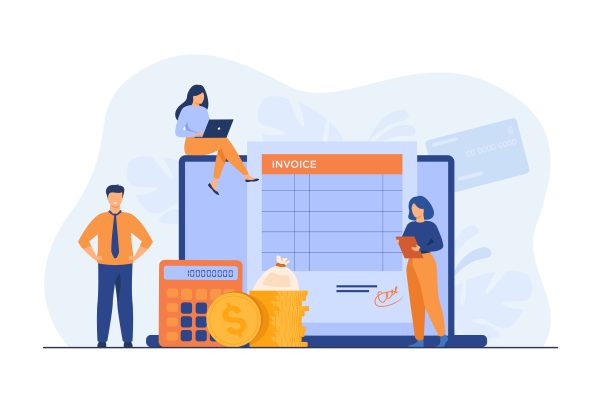
Emerging technologies are revolutionizing the landscape of Research and Development (R&D), providing unprecedented opportunities for innovation and efficiency. From artificial intelligence and the Internet of Things to blockchain and quantum computing, these advancements are reshaping the way R&D firms conduct experiments, analyze data, and protect intellectual property. Staying ahead of these rapid technological advancements is crucial for R&D firms to enhance productivity, streamline workflows, and drive groundbreaking discoveries.
Emerging Technologies Transforming R&D
In the rapidly evolving landscape of Research and Development (R&D), several key emerging technologies are making a significant impact. These technologies include Artificial Intelligence (AI), the Internet of Things (IoT), blockchain, and quantum computing.
Artificial Intelligence (AI): AI is revolutionizing R&D by fostering innovation, boosting productivity, and creating more advanced products and solutions. AI applications such as generative design, patent screening, and change-impact management are significantly reducing product development time ( source ).
Internet of Things (IoT): IoT plays a crucial role in product R&D by providing valuable insights, optimizing performance, and facilitating rapid prototyping. Data collected from IoT devices helps identify efficiency bottlenecks, predict future trends, and tailor products to user needs ( source ).
Blockchain and Quantum Computing: Quantum computing promises to solve complex problems in milliseconds, significantly enhancing general-purpose technologies like blockchain and AI. Quantum computers, utilizing subatomic particles for new processing and storage methods, are paving the way for future advancements ( source ).
These technologies are already being applied in various R&D settings. For instance, AI is driving efficiency and innovation, IoT is enabling data collection and product iteration, and quantum computing is merging with AI and blockchain to offer faster, cost-effective problem-solving methods ( source , source , source ).
Examples of successful implementation across industries include AI enhancing supply chain management and drug discovery, IoT driving organizational transformation, and quantum computing advancing scientific research and financial modeling ( source , source ). These advancements illustrate the profound impact of emerging technologies on R&D innovation, underscoring the importance of integrating these technologies to stay ahead in the competitive R&D arena.
Enhancing Productivity and Efficiency in R&D through Technology
Emerging technologies like automation, artificial intelligence (AI), the Internet of Things (IoT), and blockchain are transforming Research and Development (R&D) by significantly enhancing productivity and efficiency.
Automation and Artificial Intelligence in Data Analysis and Experimental Processes: Automation and AI are pivotal in improving the quality, reliability, and integrity of data in R&D. AI is increasingly used to augment human activities, enhancing rather than replacing human labor. This technology simplifies data management and infrastructure, reducing costs associated with these processes ( source , source ). By automating mundane tasks, AI allows researchers to focus on more complex and creative aspects of their work, thus fostering innovation.
The Role of IoT in Creating Smart Laboratories and Enhancing Data Collection: IoT integrates lab systems, instruments, and devices into a unified, intelligent ecosystem, creating ‘Smart Laboratories’. This integration enhances efficiency, accuracy, and safety in labs. IoT enables remote monitoring and control of lab equipment, which is essential for maintaining the integrity of samples and ensuring that experimental conditions are optimal ( source , source ). Researchers can access and control these systems from anywhere, leading to more productive and error-free research.
Blockchain for Secure Data Sharing and Protecting Intellectual Property: Blockchain technology ensures secure and verifiable data sharing in R&D. It creates a tamper-proof record of data provenance, ownership, and transactions, which enhances trust in R&D data. Blockchain’s decentralized architecture and immutability provide robust protection for intellectual property, streamlining licensing processes, and promoting transparency ( source , source , source ).
These technologies play an invaluable role in streamlining R&D processes, thereby driving productivity and innovation. As a company offering robust time tracking and expense reporting solutions, Minute7 can integrate with these technologies to further enhance productivity and efficiency for R&D firms, helping them stay ahead of the curve and achieve their innovation goals.
Future Trends and Preparing for Technological Integration
The future of Research and Development (R&D) is set to be significantly influenced by a range of emerging technologies. According to the McKinsey Technology Trends Outlook , generative AI (gen AI) and robotics are poised to revolutionize various industries, including R&D. Gen AI, with its advanced language models, is improving immensely in processing prompts, thereby enhancing data analysis and experimental design.
Additionally, advancements in cloud computing and 5G technology are expected to boost compute power and network speeds exponentially. This will facilitate greater innovation by enabling real-time data processing and seamless collaboration across global teams. The rise of the metaverse, augmented reality (AR), and virtual reality (VR) will also offer new avenues for virtual R&D, allowing for digital twins and immersive learning environments ( source ).
Strategies for Staying Ahead
To remain competitive, R&D firms must align their strategies with emerging trends and technological advancements. Key strategies include:
- Align R&D with Business Goals: Ensure that R&D efforts are closely tied to the overall business objectives and market needs.
- Invest in Emerging Technologies: Allocate resources to explore and adopt new technologies that can enhance R&D processes.
- Foster a Culture of Innovation: Encourage cross-disciplinary collaboration and a mindset geared towards continuous improvement.
- Adopt Agile R&D Processes: Implement agile methodologies to quickly adapt to technological changes and market demands ( source , source ).
Importance of Continuous Learning and Adaptation
The dynamic nature of technology necessitates continuous learning and adaptation within the R&D sector. Continuous learning enables professionals to stay updated with the latest advancements, thus remaining valuable assets to their teams. This involves setting clear career goals, choosing appropriate learning sources, applying new knowledge, and seeking feedback ( source , source ).
Adapting to New Technology
Adapting to new technology requires a commitment to ongoing education and the flexibility to refine existing technologies. This involves investing in R&D, fostering collaborations and partnerships, and focusing on customer needs. Creating an environment that promotes innovation is also crucial for successfully integrating new technologies ( source ).
How Minute7 Helps
Minute7 supports R&D firms by providing an efficient platform for tracking time and expenses. This is particularly beneficial for firms that need to monitor time and costs against specific projects and sync that data into QuickBooks for billing or reporting. With features like timesheets, expense tracking, secure data storage, and a mobile app, Minute7 helps firms streamline their processes, thereby facilitating the integration of new technologies and promoting continuous learning. This enables R&D firms to stay ahead of the curve and drive innovation.
Empowering R&D Innovation with Minute7
As the landscape of Research and Development (R&D) continues to evolve with groundbreaking technologies, staying ahead of the curve is essential for firms seeking to maintain a competitive edge. Emerging technologies such as AI, IoT, blockchain, and quantum computing are redefining how R&D processes are conducted, enhancing productivity, and driving innovation. By integrating these technologies, R&D firms can unlock new levels of efficiency and creativity.
Minute7 plays a crucial role in supporting R&D firms through this technological transformation. Our platform offers seamless time tracking and expense reporting, which is indispensable for R&D teams working on multiple projects and needing to allocate resources accurately. With a user-friendly interface, secure data storage, and robust integration with QuickBooks, Minute7 ensures that all project-related data is meticulously tracked and easily accessible.
By leveraging Minute7, R&D firms can focus more on their core activities—innovation and development—without being bogged down by administrative tasks. The platform’s mobile app further enhances flexibility, allowing team members to log their time and expenses from anywhere, thus supporting the dynamic and often remote nature of modern R&D work.
In conclusion, as R&D firms navigate the complexities of integrating emerging technologies, Minute7 provides a reliable and efficient solution to streamline time and expense management. This not only helps in maintaining accurate records but also supports the broader goal of fostering innovation and staying ahead in a rapidly advancing technological landscape. Trust Minute7 to be your partner in driving R&D excellence and achieving your innovation goals.



